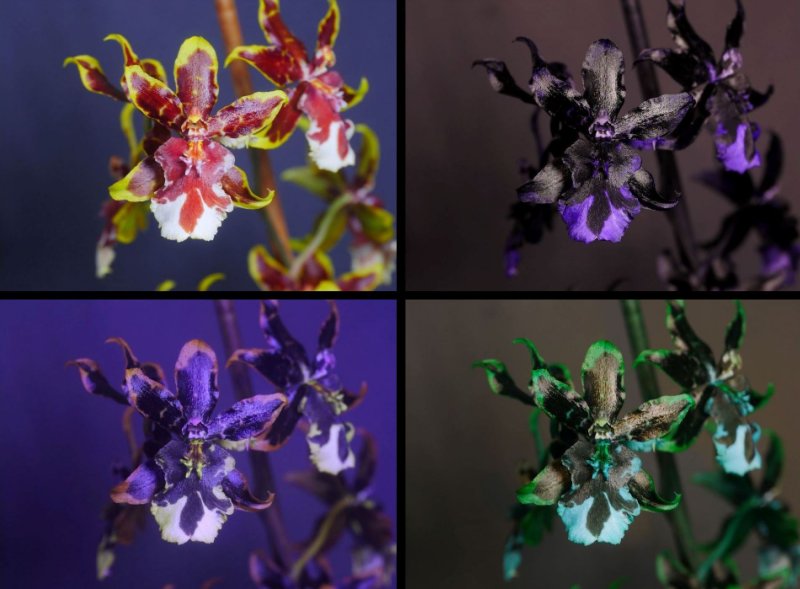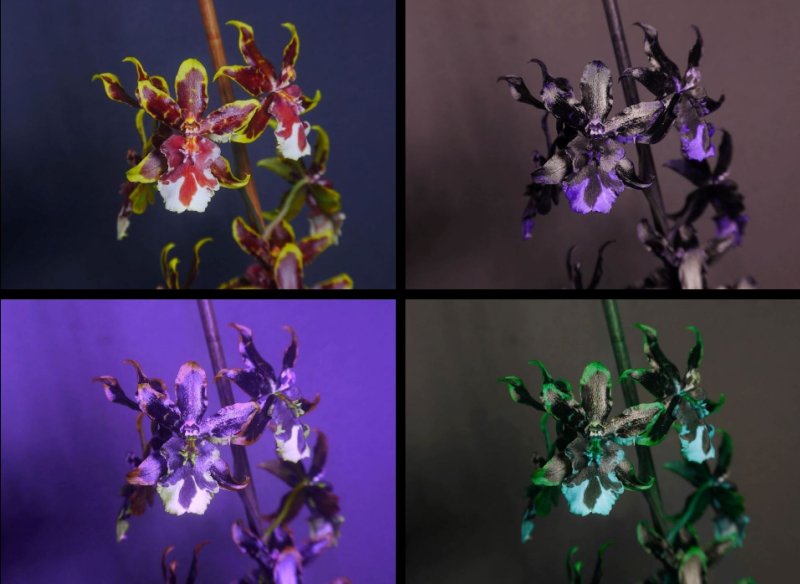A while ago, on my search for affordable lenses for reflected UV photography, I discovered in an older UV-VIS spectrometer system some seemingly useful Quartz Fluoride Lens system (QFC) of approximately f3.2 / 81mm. It had to be modified to convince it to work with a camera, and also a variable aperture had to be added, but I succeeded finally to get it to work on a mft camera system.
So today a comparision between my "work horse" UV-Nikkor f4.5/105mm (top) and this QFC f3.2/81mm (botttom):


Both images are a Quadriptych of VIS, reflected UV, sim. Butterfly and Bee vision (left to right, top to bottom)
Both lenses differ in focal length, 105mm for the UV-Nikkor vs 81mm for the Quartz Fluoride Condensor lens, and lens speed f4.5 vs f3.2 but other than that they are quite comparable: there is hardly any focus shift, just sharpness and contrast is higher with the rather expensive UV-Nikkor lens compared to the Quartz Fluoride Condensor lens, quite as expected. Other than that this old lens does very well, but it only covers mft sensor format, possibly APS-C (with another modification).